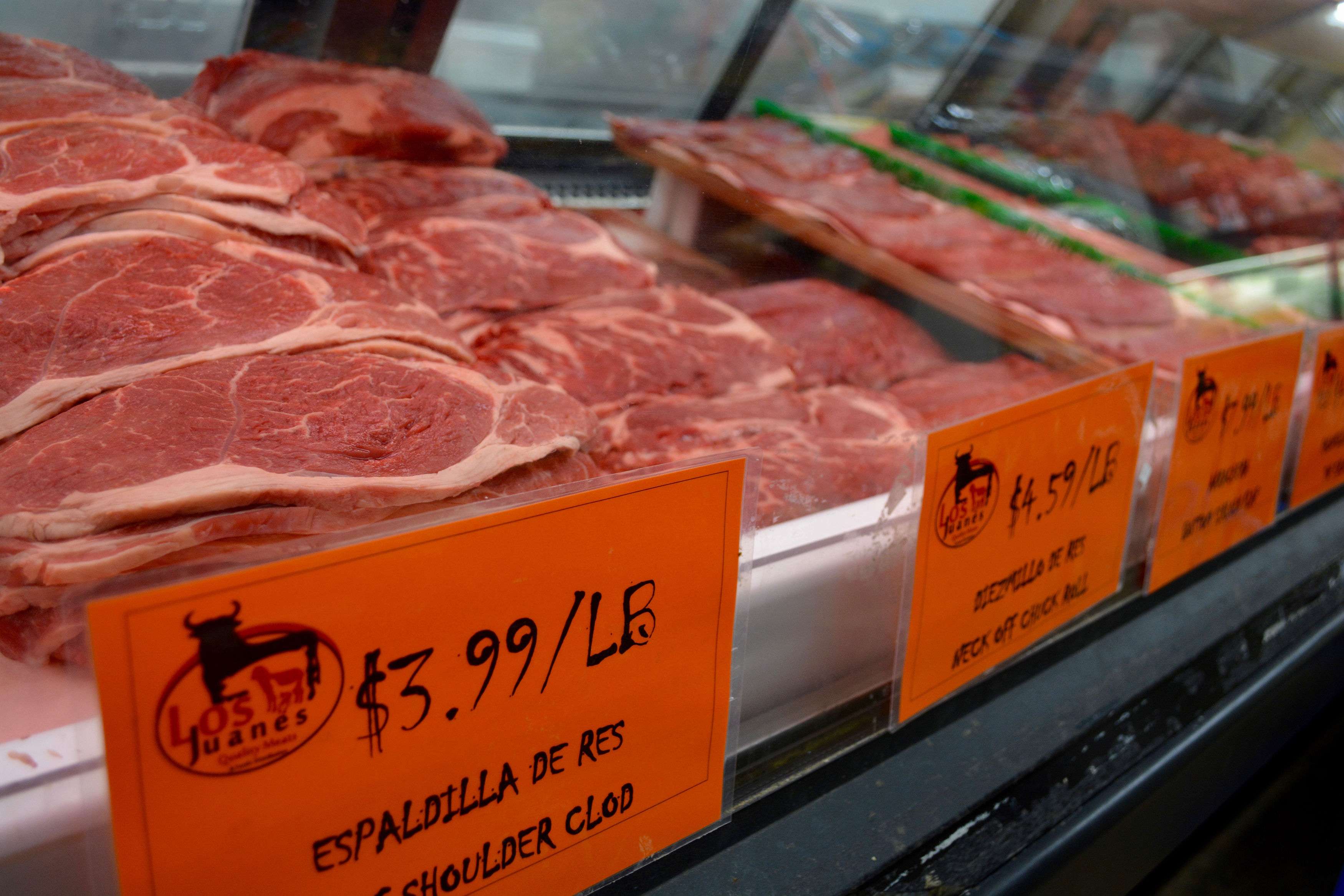What Makes Bagley Farms Meat Market Edwardsville IL Stand Out for Meat Lovers
What Makes Bagley Farms Meat Market Edwardsville IL Stand Out for Meat Lovers
Blog Article
Discover the Art of the Butcher's Cut in a Modern Meat Market
In the ever-evolving landscape of modern meat markets, the butcher's cut has actually transcended its traditional roots, merging age-old workmanship with contemporary techniques. What really sets the modern butcher apart is their capability to create a much deeper link in between consumers and the beginnings of their meat.
Evolution of Butchery Methods
The advancement of butchery strategies mirrors an abundant tapestry of advancement and adjustment driven by developments in modern technology, modifications in consumer need, and a deeper understanding of meat science. Historically, butchery was a craft passed down through generations, with techniques refined over centuries to make best use of yield and flavor. The industrial change ushered in automation, changing standard methods and enabling massive handling.
The mid-20th century saw butchery techniques additionally fine-tuned by scientific insights into muscle mass biology and meat aging, boosting both inflammation and preference. Technologies like vacuum product packaging and refrigeration extended product shelf-life, enabling butchers to diversify offerings and boost high quality control. This duration additionally marked the rise of specialized devices, such as band saws and meat slicers, which boosted precision and efficiency in meat handling.

Digital systems currently help in tracking animal provenance and enhancing cuts to satisfy particular consumer choices. Additionally, a rebirth in artisanal butchery has arised, mixing conventional abilities with modern-day knowledge to cater to customers seeking ethical and lasting meat alternatives.
Recognizing Meat Cuts
Recognizing the complexities of meat cuts is vital for both butchers and consumers looking for top quality and value. For butchers, specific cuts reflect skill and regard for the craft, making sure very little waste and optimal return.

Understanding muscular tissue composition is crucial; muscle mass made use of much more regularly by the animal often tend to be harder and are best fit for sluggish cooking approaches, while less-used muscles, like those found in the loin, are extra tender and suitable for barbecuing or roasting. Knowledge with these distinctions empowers consumers to make enlightened options, enhancing their cooking ventures.
Picking Top Quality Meat
Selecting the right meat entails more than simply selecting a visually appealing piece from the display. The art of picking high quality meat needs a critical eye and expertise of particular qualities that symbolize freshness and quality.
Secondly, consider the marbling, which refers to the white streaks of fat within the muscular tissue. Correct marbling is a crucial sign of tenderness and taste, as it melts throughout food preparation, boosting the meat's juiciness. Remember, greater marbling typically correlates with superior high quality cuts, such as USDA Prime.
Structure is you could check here one more essential variable; meat must really feel firm to the touch, not slimy or extremely soft. Furthermore, be mindful of the fragrance. Fresh meat should have a clean, neutral smell, devoid of any type of sour or repulsive odors.
Matching Cuts With Cooking Techniques

On the other hand, tougher cuts like brisket and chuck roast are rich in collagen, which damages down into gelatin when prepared slowly. These cuts are ideal for braising or slow-moving roasting, permitting the meat to soften with time and create deep, intricate tastes. Cuts such as short ribs and pork shoulder make out well with slow-cooking approaches, where expanded cooking times change their robust appearances right into delicious recipes.
Lamb shanks and oxtail, which need prolonged food preparation to tenderize, are perfect candidates for cooking or sluggish simmering. These techniques coax out rich, hearty tastes while maintaining wetness. By comprehending the distinct features of each cut, chefs and home chefs alike can boost their culinary productions, making sure each recipe is both satisfying and remarkable.
The Butcher's Duty Today
Browsing the advancing landscape of the contemporary meat market, the butcher's role today extends past simple prep work of cuts. Contemporary butchers are cooking his comment is here craftsmens, instructors, and supporters for sustainable techniques. They bridge the void between the farm and the fork by guaranteeing honest sourcing, comprehending pet husbandry, and prioritizing openness in the supply chain. This shift reflects the growing customer demand for top quality over amount, where provenance and animal welfare are paramount.
In enhancement to crafting precise cuts, butchers currently involve straight with customers, offering cooking recommendations and tailoring selections original site to fit specific needs and preferences. Their expertise in meat aging, marbling, and taste accounts encourages customers to make informed choices, enhancing their cooking experiences. This personalized solution exemplifies the butcher's advancing role as a trusted expert in the cooking area.
Additionally, butchers are essential in lessening waste, making use of entire animals to produce diverse products such as sausages and supplies. This detailed strategy not just appreciates the animal but likewise lines up with modern sustainability objectives. This way, the modern-day butcher symbolizes both tradition and development, adjusting to an ever-changing market while preserving the creativity and stability of their craft.
Conclusion
Mastery in understanding diverse meat cuts and high quality indicators empowers butchers to offer informed referrals, straightening particular cuts with optimum cooking approaches. By honoring historic methods while welcoming contemporary demands, the butcher's duty remains important in today's innovative meat market.
Report this page